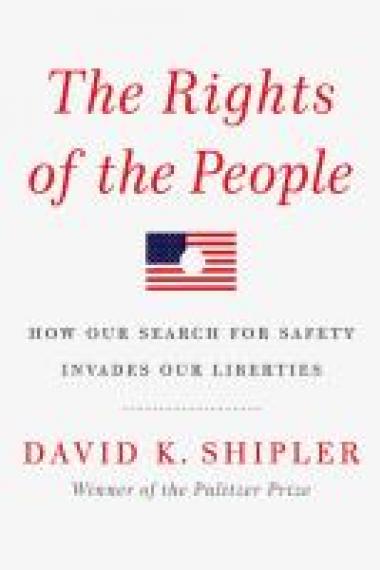In his fascinating 2000 book “Communazis,” the late scholar of German literature Alexander Stephan describes the U.S. government’s surveillance of a group of émigré writers who lived in the United States and Mexico during and after World War II. None were found to pose much of a subversive threat, and the surveillance never led to real persecution—indeed, few of the writers noticed that they were being watched. Instead, what impresses Stephan is the essential absurdity of the situation, as huge numbers of government employees intercepted and catalogued communications, meticulously recorded comings and goings, and sifted enterprisingly through trash bins, exhibiting a “combination of high efficiency with grotesque overkill”—and all, of course, “at taxpayers’ expense.”
David K. Shipler’s compass in The Rights of the People is wider, and so his book gives context to Stephan’s microanalysis. During years of hot war and then decades of cold war, our guardians sought to preserve our security by intercepting millions of private telegrams, opening and photographing countless private letters, compiling watch lists containing millions of names, and opening hundreds of thousands of intelligence files. Particularly during the Cold War, some advocates expressed strong concerns about encroachments on civil liberties. But though few, if any, domestic communists engaged in real espionage or committed violence in the postwar period, at no point did anyone say in public, “Many domestic Communists adhere to a violent foreign ideology; however, they are actually quite a pathetic bunch, and couldn’t subvert their way out of a wet paper bag. Why are we expending so much time, effort, and treasure on them?”
As Shipler documents rather well, we are back at it again in the post-9/11 era—except that technological and other developments have allowed for an exponential increase in surveillance. Thus, billions of communications are intercepted and millions of cases are opened, leading, as he astutely points out, to a preposterous situation in which coherent policing is hampered by obedience to a standing order that authorities follow up on all tips (99 percent of them “hoaxes,” according to one U.S. attorney). The “If You See Something, Say Something” counterterrorism hotline run by the New York City police generates thousands of calls each year—more than 16,000 in 2009 alone—but not one has led to a terrorism arrest.
Shipler, whose previous books include The Working Poor (2004) and the Pulitzer Prize–winning Arab and Jew (1987), makes a credible case that civil liberties are at risk of abuse. But he documents only a limited amount of maltreatment, much of which seems to have been somewhat self-correcting. He spends considerable time on a couple of cases from shortly after 9/11—when intelligence agencies, it must be noted, were mindlessly stoking hysteria by confidently and erroneously estimating that there were thousands of Al Qaeda agents loose in the land. In one of the cases Shipler highlights, a cascade of misidentifications and fancied connections led to accusations against an innocent man, Oregon attorney Brandon Mayfield, and in the other, a prosecution was egregiously mishandled. However, Mayfield received a formal apology from the Justice Department sweetened with a $2 million payment, and the other case was thrown out of court and the misguided federal prosecutor indicted.
No defense of civil liberties is likely to be terribly effective as long as people believe that the threat from terrorism is nothing short of existential. This fear, stoked during the George W. Bush administration and still promoted under Barack Obama, goes almost completely unexamined by pundits and the press. In 2008, then–Department of Homeland Security secretary Michael Chertoff bizarrely declared that the threat was “a significant existential” one. And the hype continues unchallenged. At a recent press conference, current Homeland Security chief Janet Napolitano announced that, though the likelihood of a large-scale organized attack is diminished, the continued danger of a small-scale disorganized attack means that the terrorist threat is higher than at any time since 9/11.
The point is not that there is nothing to find, but that excesses can only be reduced if the hysteria about terrorism is substantially dampened. If people think that the chances that they will be killed by a terrorist in the next year are dangerously high (rather than one in 3.5 million, as is the case), they are unlikely to be moved by concerns about Miranda rights. Shipler briefly surveys the mostly pathetic people arrested since 9/11 and finds them to be scarcely scarier than the domestic demons of the Cold War. But this issue should be central, rather than incidental, to his argument. To undo the security system that has burgeoned over the last 10 years, one must attack not simply the consequences of the system but the premise that furnishes its essential engine, and Shipler leaves that substantially untouched. It may also be useful to factor in the spectacular costs of enhanced domestic security expenditures since 9/11, which appear to have accumulated to more than $1 trillion. As Stephan might amazedly suggest, taxpayers really ought to take note.

